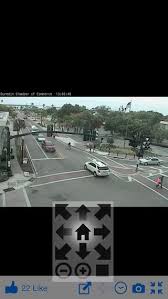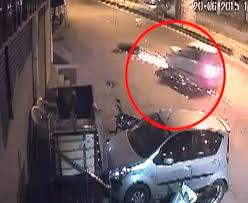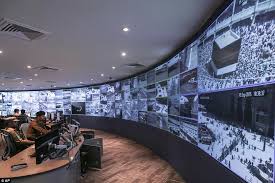CCTV Watches the World Go By
Article excerpt
CLOSED - CIRCUIT surveillance systems used with other methods of access control support security departments at land transportation facilities, airports, and seaports. They increase security officer efficiency and productivity, and the end result is a more secure facility
At first glance, securing land transportation facilities may seem to be an overwhelming task, but taken in sections, such facilities can be easily secured with the help of CCTV CAMERA

The inner perimeters of bus, train, and subway stations can be defined as the entrance gates to various platforms or terminals. In these areas, CCTV systems are used both as monitoring devices and as deterrents
CCTV cameras monitor passenger activities and allow security officers to watch for criminal action, disturbances, and passengers who may need assistance. CCTV cameras placed in obvious locations serve as deterrents and provide a sense of security to passengers
CCTV equipment is also used in storage areas, such as rail yards, to help secure access and deter theft
Another form of land transportation is the highway system. Highway access is controlled by toll booths, tunnels, and bridges. Perimeter access control is maintained by the governing authorities in these areas
Access control here involves more than keeping traffic out of an area or limiting access to it. Access control also means ensuring access to an area. It is vitally important to maintain efficient access to industrial, commercial, and financial centers

Montreal is an example of how important access control is to a major metropolitan area. CCTV cameras are strategically located on both the Champlain Bridge and the Jacques-Cartier Bridge, the main access arteries to the island of Montreal from the south shore
These cameras are part of a surveillance system that also includes CCTV monitors and VCRs and is controlled by a microprocessor-based control system. This system is used with traffic control signals to keep the traffic flowing during the morning and evening rush hours
CCTV systems are also used to monitor traffic on heavily traveled sections of highways. This surveillance allows traffic engineers to see problems on their monitors in their control location. From there they can adjust the computer-controlled traffic lights and alert emergency squads
Not only does this monitoring help traffic engineers but law enforcement officers also benefit. CCTV enables highway patrols to respond more effectively to emergencies, traffic snarls, and dangerous weather conditions
Law enforcement has recently started using CCTV cameras to monitor unstaffed toll booths. Cameras are monitored by police officers who then alert officers in the area of toll booth violations

Tunnels provide another interesting application for CCTV systems. Here, because it is unsafe for security personnel to patrol, CCTV is used for traffic control. Cameras in tunnels keep a 24-hour watch over traffic flow, and VCRs permit personnel to quickly review incidents. Officers are able to see traffic jams, fires, and accidents and, therefore, can provide immediate assistance
A final example of a land transportation facility that uses CCTV systems is parking garages. CCTV systems are used in multilevel parking garages at entrances and exits to ensure safe vehicular passage and inside the garage to prevent vandalism, theft, and assaults
Land transportation facilities and roadways have widely variable lighting conditions. On highways and bridges, cameras are mounted high on structures in unprotected areas. In tunnels, parking garages, and bus, train, and subway stations cameras are lo-cated in confined, low-light level areas. But no matter the conditions, CCD cameras provide the answer
CCD cameras are perfect for these applications because of their high sensitivity, reliability, and versatility. These cameras produce high-quality images in a variety of lighting conditions. …





